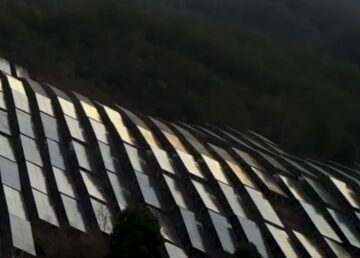David Fickling at Bloomberg:
 To make the solar cells that are projected to become the world’s biggest source of electricity by 2031, you first melt down sand until it looks like chunks of graphite. Next, you refine it until impurities have been reduced to just one atom out of every 100 million — a form of elemental silicon known as polysilicon. It’s so vital to the production of solar panels that it can be likened to crude oil’s role in making gasoline. The polysilicon is then drawn out into a vast crystal, resembling a Jeff Koons steel sculpture of a sausage, before being sliced into salami-thin wafers. These are then treated, printed with electrodes, and finally sandwiched between glass.
To make the solar cells that are projected to become the world’s biggest source of electricity by 2031, you first melt down sand until it looks like chunks of graphite. Next, you refine it until impurities have been reduced to just one atom out of every 100 million — a form of elemental silicon known as polysilicon. It’s so vital to the production of solar panels that it can be likened to crude oil’s role in making gasoline. The polysilicon is then drawn out into a vast crystal, resembling a Jeff Koons steel sculpture of a sausage, before being sliced into salami-thin wafers. These are then treated, printed with electrodes, and finally sandwiched between glass.
The basic process has changed little since the first cell was invented in 1954 by scientists at Bell Laboratories in New Jersey exploring whether silicon could be used to power computer processors. “It may mark the beginning of a new era,” The New York Times wrote at the time in a front-page article announcing the discovery, “leading eventually to the realization of one of mankind’s most cherished dreams — the harnessing of the almost limitless energy of the sun for the uses of civilization.”
The seven decades since tell the remarkable story of how America squandered its invention of solar photovoltaics, or PV, to the point where it will never recover.
More here.
Enjoying the content on 3QD? Help keep us going by donating now.
